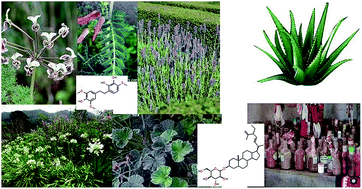The chemistry and bioactivity of Southern African flora II: flavonoids, quinones and minor compound classes
Abstract
This review is intended to highlight the relevance of natural products in drug discovery paying particular attention to those derived from Southern African medicinal plants with diverse biological activities. In this review series, a literature survey led to the collection of 864 secondary metabolites from 101 plant species from 57 plant families. A correlation between the known biological activities of isolated compounds and the ethnobotanical uses of the plants has been attempted. Part I focused on alkaloids and terpenoids, while this part is focused on the bioactivities of flavonoids, quinines and other minor, unique compound classes which correlate with their ethnobotanical uses in African traditional medicine (ATM).


 Please wait while we load your content...
Please wait while we load your content...